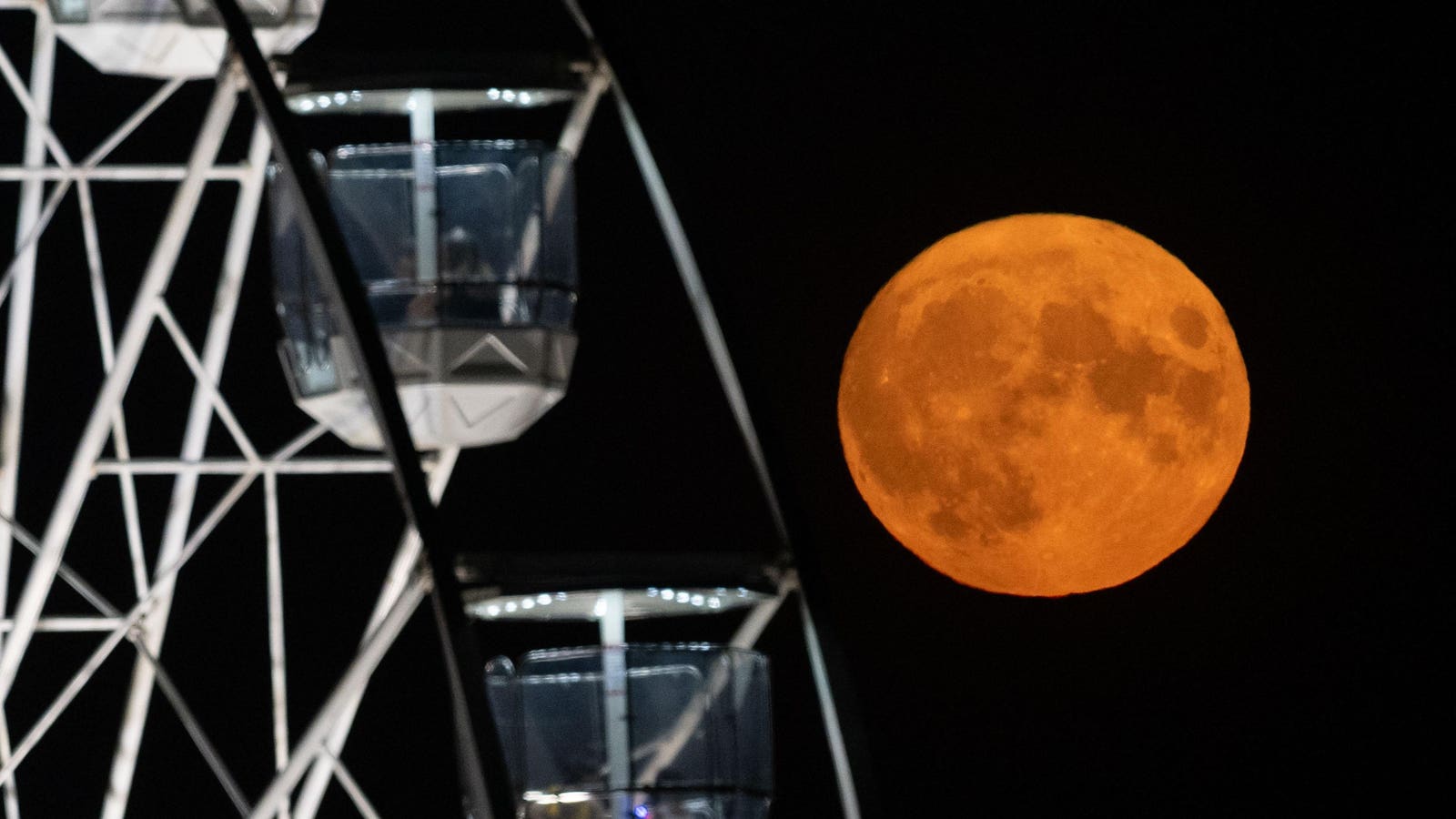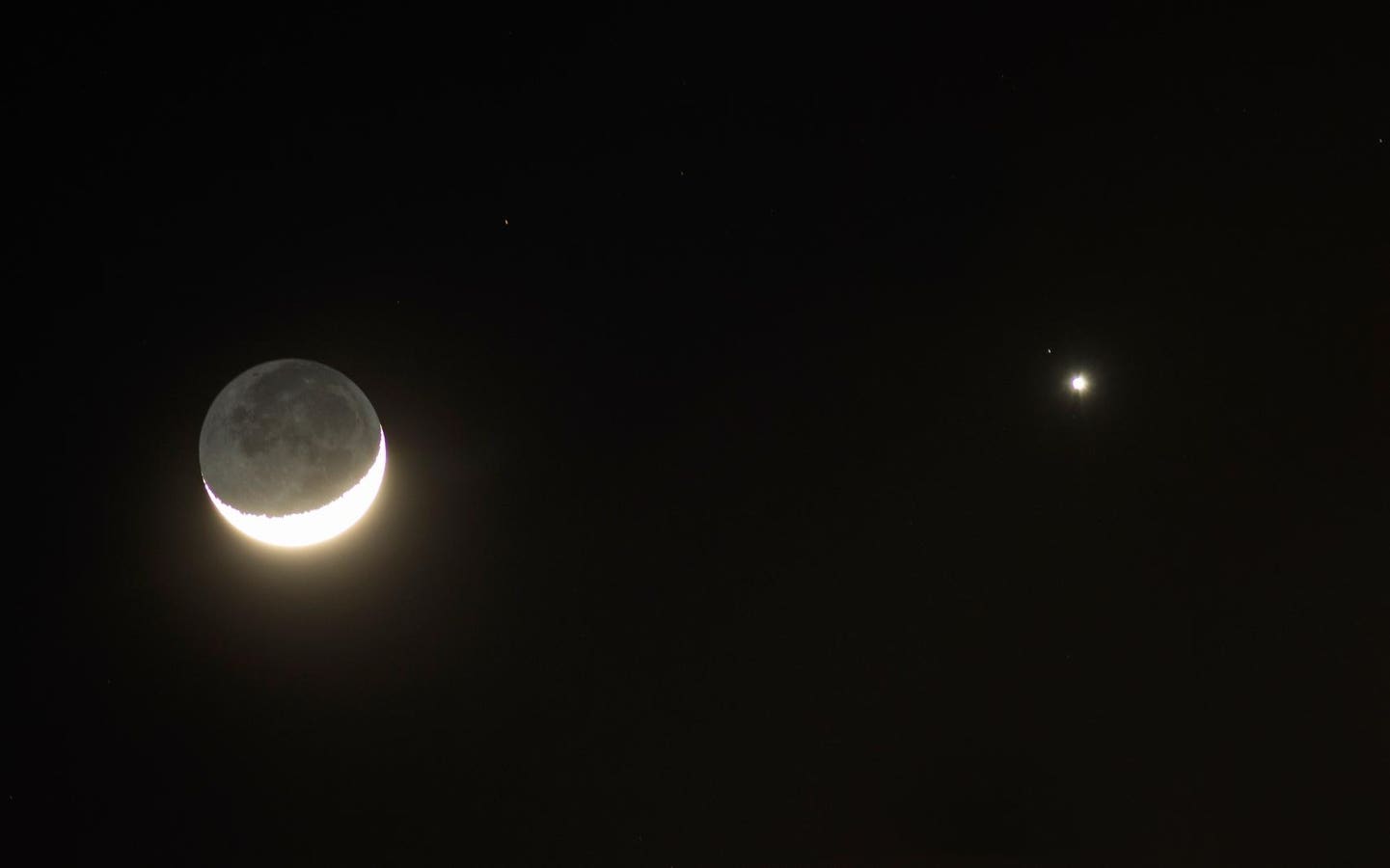Topline
August’s full moon, the “sturgeon moon,” may have one of the strangest names in the lunar calendar, but this year it’s exquisitely timed for skywatchers in North America. Though it’s technically opposite the sun early on Saturday, Aug. 9, it will look at its best at moonrise on two successive evenings — Friday, Aug. 8 and Saturday, Aug. 9. However, moon gazers will need to get their timing precise to see it appear on the horizon as a glowing orange orb.
The August full moon known as the ‘Sturgeon Moon’ rises behind the ferris wheel at Bristol International Balloon Fiesta at Ashton Court Estate, on August 11, 2022 in Bristol, England. (Photo by Finnbarr Webster/Getty Images)
Getty Images
Key Facts
The moon will reach its full phase at precisely 3:56 a.m. EDT on Saturday, Aug. 9, when it will be 100% illuminated by the sun.
A full moon is, by definition, opposite the sun, so it always appears in the eastern sky around the same time as the sunset in the western sky. This month, as seen from mid-latitudes of the Northern Hemisphere, it will rise in the southeast, shine all night and set in the southwest.
Since it’s opposite the sun, a full moon always mirrors its position. In summer, the moon behaves like the sun in winter, tracing an arc low in the southern sky.
Exactly When To Watch The Full Moonrise From North America
A moon calculator will find the exact time of moonrise on Friday, Aug. 8 and Saturday, Aug. 9, for any location on Earth, but here are some sample times for the biggest cities in the U.S. (For all locations, sunset more or less coincides with moonrise on Friday, Aug. 8).
- New York City: 8:03 p.m. EDT on Friday, Aug. 8 and 8:32 p.m. EDT on Saturday, Aug. 9.
- Chicago: 8:02 p.m. EDT on Friday, Aug. 8 and 8:29 p.m. EDT on Saturday, Aug. 9.
- Houston: 8:05 p.m. EDT on Friday, Aug. 8 and 8:41 p.m. EDT on Saturday, Aug. 9.
- Phoenix: 7:21 p.m. EDT on Friday, Aug. 8 and 7:55 p.m. EDT on Saturday, Aug. 9.
- Los Angeles: 7:48 p.m. EDT on Friday, Aug. 8 and 8:21 p.m. EDT on Saturday, Aug. 9.
Why The Full Moon Will Rise Twice
The moon rises, on average, 50 minutes later each night during the 29 days of its orbit around Earth. However, there’s much variation depending on the latitude of the viewer. Since the moon has a tilted orbit and doesn’t orbit directly over Earth’s equator, the daily delay in moonrise depends on how steeply the moon’s orbit intersects the horizon. When the angle is shallow — as it is right now, as seen from mid-latitudes of the Northern Hemisphere — the moon rises only slightly later each night.
The Next Full Moon Is A Total Lunar Eclipse
The sturgeon moon is the eighth of 12 full moons in 2025. A solar year is 365.24 days, while a lunar year is around 354.37 days, so sometimes there are 13 full moons in one calendar (solar) year — as in 2023 and next in 2028. The next full moon is the Corn Moon on Sunday, Sept. 8, and from Asia, Australia, and the Pacific Ocean will also be a total lunar eclipse similar to that seen in North America on March 13-14.








